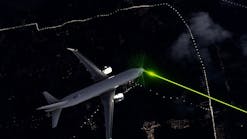As the gateway to communities across the world, airports are a crucial part of how the world moves. This includes those moving in a nefarious manner, making it critical staff inside the terminal knows how to spot concerning behavior and stop it.
According to the U.S. Department of State’s 2023 Trafficking in Persons Report, there were 115,324 identified victims of trafficking in 2022, the most since 2019. As human trafficking continues to grow, putting airports on the frontlines of halting these efforts and getting victims out of harms way.
Stopping trafficking starts with training staff to spot issues and intervene the right way. Carol Leaman, CEO of Axonify, shared critical elements with Airport Business about what aviation organizations need to consider to prepare their employees to meet this challenge.
Evolve Your Training
In the fast-paced aviation industry, addressing emerging challenges is crucial. Just two years ago, human trafficking wasn't a frequent topic of discussion in airports. Yet, as awareness grows, so does the need for frontline aviation employees to be adequately trained.
"If you are an employee that was hired two years ago, you may not have been trained on this particular issue," Leaman said. "How they get trained needs to be a lot different than onboarding when you're hired."
Traditional onboarding methods fall short for deskless workers. Leaman emphasizes the need for ongoing, accessible and timely training.
Leaman recommends daily, bite-sized training events lasting one to three minutes to reinforce critical information. This ensures that employees retain essential knowledge and can apply it when it matters most.
"We have customers quite literally who change the content daily and it is delivered through a variety of means," she said. "Doing it with frequency, focusing on key topic areas and then having the ability through your delivery mechanism to update it at a moment's notice is critical."
Communication is Key
Aviation employees need to act swiftly when spotting potential trafficking situations. Airports and airlines need to ensure employees have immediate access to the knowledge of who to call, how to call, and when to call authorities, fostering effective collaboration with law enforcement.
Beyond internal training, the challenge extends to engaging passengers in the fight against human trafficking. While corporate policies guide these interactions, you must ensure frontline employees are equipped to communicate and raise awareness without overstepping legal boundaries.
"In the training world, specifically corporate enterprise has had this inability or the lack of desire to do anything more than create a bunch of courses, have them be long-form, an hour to sometimes hours, deliver them sometimes via technology and then consider the individual trained," Leaman said. "Lots of tools have enabled you to change content frequently, like daily deliver information and have the employee know that they can reach into the solution and extract information that they need to have in that moment of need in the moments that matter."
Different jurisdictions have different laws. Leaman emphasizes the importance of ensuring employees are aware of the laws applicable to their location and how to comply with them, thereby avoiding legal complications.
“The core is making sure your employees know what those laws are wherever they are and how to comply with them and what to do if faced with a situation.," she said.
Make Sure Training is Working
Measuring the success of training programs is vital. Organizations should assess employee knowledge daily, tying it to outcomes like the number of reports submitted. This data-driven approach helps organizations fine-tune their training strategies.
"What we do know is that as we are talking to more and more aviation organizations, so it’s a very front and center issue," Leaman said. “There are many in the process of trying to figure out what to do and how do we put our best foot forward to make sure we stop the issue or prevent it as much as possible."
Human trafficking is a global issue, demanding both local and global efforts. Leaman stresses the importance of collaboration and consistent communication among aviation entities to stay updated on the latest tactics employed by traffickers.
As the aviation industry evolves, the fight against human trafficking requires innovative solutions. It’s important to keep the commitment to ongoing, accessible training positions frontline aviation employees as the first line of defense against this global menace.
“This whole idea of giving people knowledge and information in the moments that matter is something that airlines have resisted," Leaman said. "We're quite heartened to see this issue getting increasing attention and I do think that everybody's trying to figure out how to stay on top of everything that changes on a daily and weekly basis and communicate that in the flow of work to the individuals that need to know."



